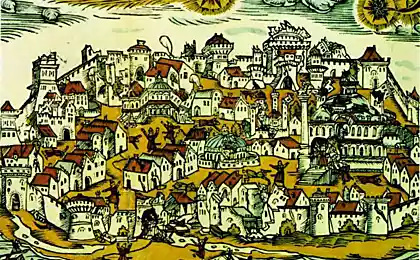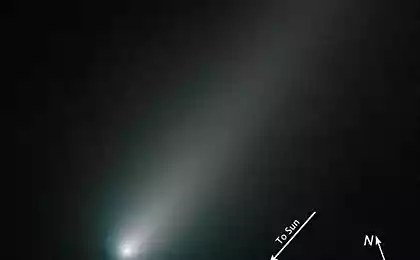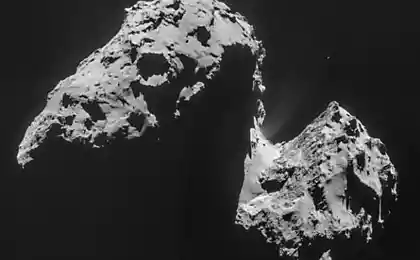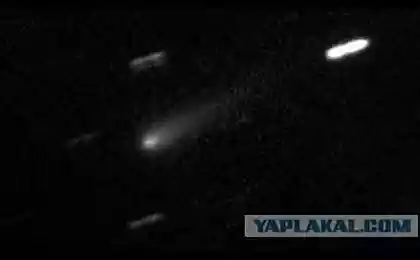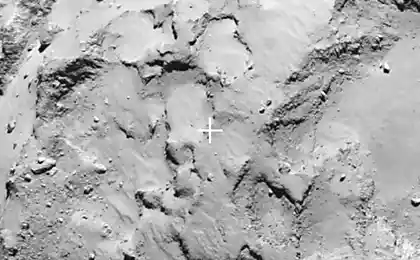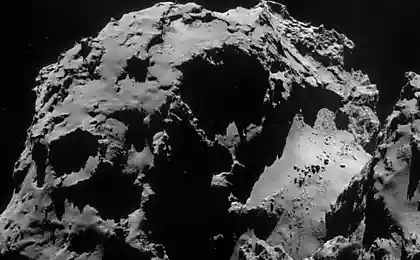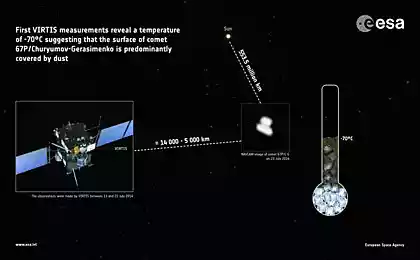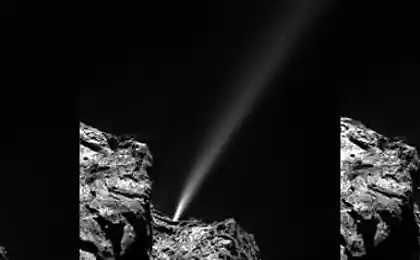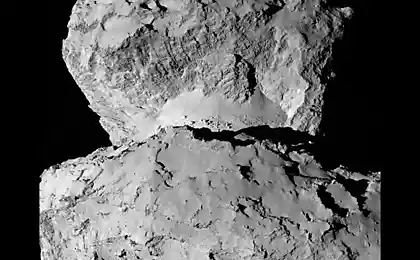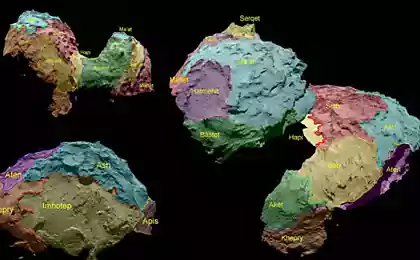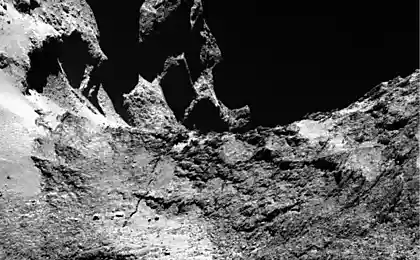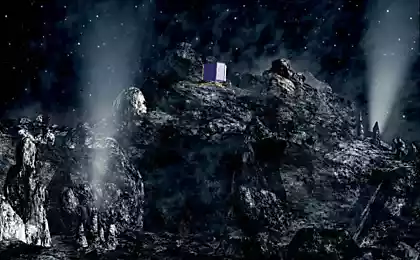1224
ESA has posted a photograph of "boulder" on the surface of the comet Churyumov-Gerasimenko
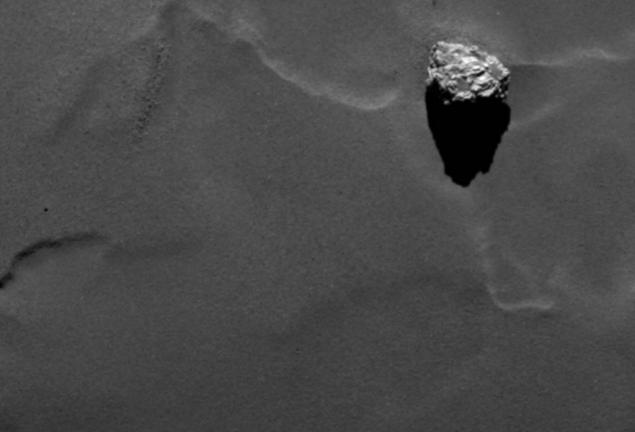
Day landings probe Philae comet Churyumov-Gerasimenko is getting closer, the date November 12, this day will be made landing, waiting for many. Nevertheless, and now holds a very active work space probe Rosetta comet photographed constantly, conducting various measurements and sends the received data to Earth.
Unlike NASA, the European Space Agency publishes many photos with a long delay. For example, one of the most interesting pictures of the comet surface made from a distance of 28, 5 km, was laid out just now. This photo is remarkable the fact that it has many details of the surface of the comet, including a huge conglomerate boulders.
Boulders in general little interest would be if it were not on the comet formation, the formation of these very large. The boulder, which is visible on anonsnoy pictures, has a size of approximately 45 meters. This object appears in the photo boulder, rather, it can be called a rock formation. Perhaps this photo - one of the first, where the surface of the comet can be seen as well.
Conglomerate boulders reminded scientists of the Egyptian pyramids, and the largest of them - the Pyramid of Cheops. Scala, in question, and was named Cheops (the Pharaoh, also known as Khufu, lived in 2550 BC).
In general, the mission Rosetta now agreed on the principle of naming new objects - they will call, using the names of famous Egyptian rulers, priests, gods and other figures.
Cheops (this time we mean boulder) was first seen on August still photos when Rosetta only approached the comet. After some time, the station was able to make very good pictures at a distance closer (used instrument OSIRIS - by the way, this abbreviation is the same name as one of the most famous Egyptian gods), the resolution of photos - 50 centimeters per pixel.
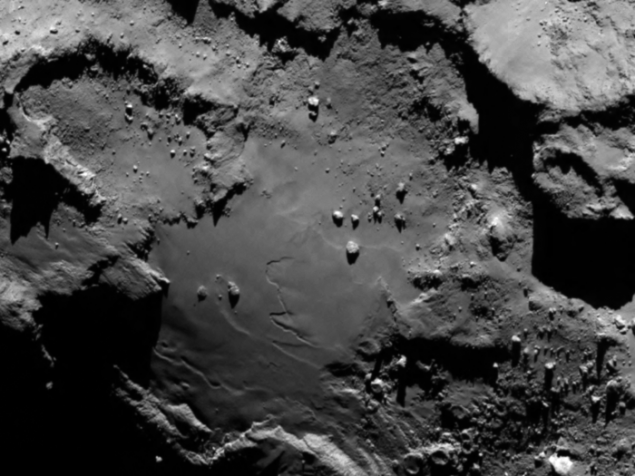
The photo was taken on August 6 at a distance of 130 kilometers
Valunoobraznye objects, in general, characteristic of the comet Churyumov-Gerasimenko, they found in many places. But Cheops stands out among the other objects of this kind: a "loner", and its color is lighter than the other "boulders", and lighter than the surface of the comet.
Now astronomers are trying to figure out what are the "boulders". What are they? What are their physical properties, including density? How did they appear? Hopefully, over time, scientists will have the answers to all these questions, and after we have already obtain full information about the comet, its structure and origin.
It is worth recalling that today Rosetta will approach the comet at a distance of 10 kilometers.
Via esa
Source: habrahabr.ru/post/239891/
Tesla D: Two engines, four-wheel drive, acceleration to 100 km / h in 3, 2 seconds
Not as in "Gravity": how astronauts repaired the ISS

